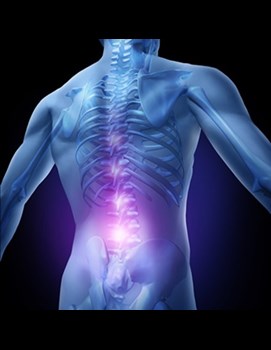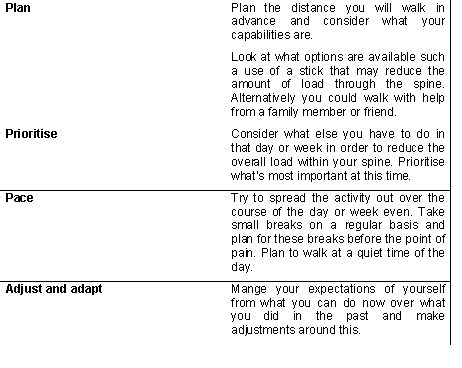
General pain considerations
It is important to gain an understanding of how pain works in general as this has been shown to improve people’s ability to manage their condition more effectively.
How is this relevant to you?
The most important thing you should know is that pain does not always mean harm. It is possible to feel no pain with damage to our body. It’s also possible to experience a lot of pain even when no damage to our bodies has been shown.
We know now that pain is far more complex than only what is going on in our bodies and can be influenced by other areas of your life. These include:
- Mood and emotions
- Beliefs about pain
- Avoiding meaningful activities/social contact.
- Lifestyle choices
This is often referred to as “The Bio – Psycho – Social model of pain”. This means all areas of your life can influence pain. It is important to look at your life as a whole when dealing with spinal pain to see if there are any other contributing factors.
Managing daily activity
The longer we have pain, the harder it can be to keep active. Our activity levels often change based on our pain and this often leads to a change in how we approach day to day activities.
You may find that on your good days, when pain is not too bad, you overdo it. This can then make you sorer, meaning you then need to rest for either the rest of the day or for days later. This is known as “over and under activity cycling” or “boom/bust cycling”.
Long term this pattern may cause you to rest for longer periods, which then reduces your motivation to be active, and then avoidance of overall activity. In most cases this will lead to reduced strength, stamina and flexibility of the tissues in your spine.
This can often lead to more pain from your tissues having to then work harder when trying to be active.
Successful management of activity
Remaining active with pain can be achieved by following some key themes from the example shown below of a patient with low back pain who wants to increase their walking distance.

Click HERE for a printable version of ‘Managing Daily Activity’.
Goal setting
Before starting rehabilitation, it is important to consider setting some goals. Setting meaningful activity goals can help with motivation during rehabilitation as often the process of recovery can be slow.
By setting activity goals (alongside your exercise targets) and tracking progress, this allows individuals to see improvements with rehabilitation. If you are struggling to achieve these goals then you can make the necessary changes to your rehabilitation programme as required.
There are a few things worth considering when setting goals.
They key is to set goals that are:
- Realistic
- Enjoyable
- Specific
- Timed
An example of a goal for back pain is shown below:
‘By the end of September, I would like to be able to walk far enough to be able to pick my grandchild up from school’
At set intervals you can review the activity to see if this is getting easier for you to perform.
If it is not, maybe consider if it is at too high a challenge for you at the moment? Remember back to it being a realistic target.
If you continue to see no progress, it might be time to discuss with a health care professional to see if they can help problem solve to allow you to get back on track with your goals.
Click HERE for a printable version of ‘Goal Setting’
Flare-up management
It is normal for you pain levels to go up and down, even as you are getting better. These are called flare ups”. It can be helpful to have a “flare up” plan in place to help you stay in control of your pain and get you through these times.
By having a flare up plan in place, you are giving yourself the best chance of controlling your symptoms.
You may have noticed that certain situations or activities may result in a flare up of your pain. For example, it may be being over active, or it may be social activities or emotions such as stress or low mood. Sometimes these things cannot be avoided, however if we recognise the things that aggravate our symptoms, we can plan strategies to help manage this.
For example, if you have a large fence to paint and you would normally be able to do this in a day, you would plan the job ahead, splitting into manageable chunks.
Recognising changes in your pain, mood, and irritability may allow you to be aware of a flare up happening as well as situations which may cause this. Often patients tell us that they may notice other signs first before a rise in their pain intensity such feeling stressed and an awareness of tension in their spine.
Flare up plan
By recognising the factors which aggravate your pain, you can plan in advance the tools and strategies to help you manage these. You may find it helpful to write these down.
Examples of strategies to help may include:-
- Medication
- Managing activity (remember the fence example on the previous page)
- Short periods of rest
- Mediation/relaxation
- Ask for help (family, friends, work)
Click HERE for a printable version of Flare-Up Management